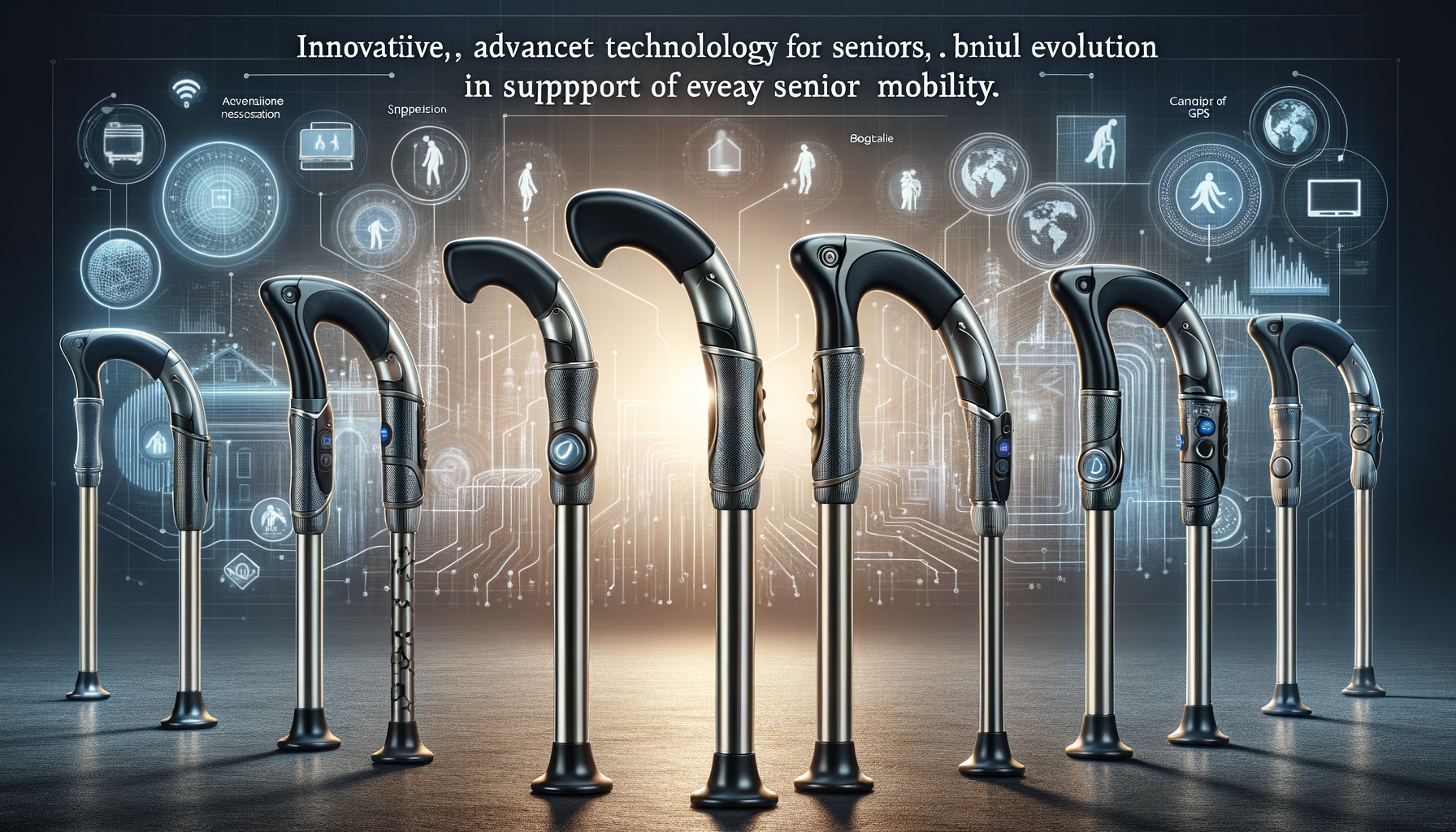
How Smart Canes Are Evolving to Support Everyday Senior Mobility
Smart Walking Canes: A New Era in Mobility
Smart walking canes are revolutionizing the way individuals with mobility challenges navigate their daily environments. These advanced devices are not merely about providing physical support but also about integrating technology to enhance user experience and safety. Equipped with sensors, GPS, and even fall detection systems, smart canes offer a comprehensive solution that traditional canes simply cannot match.
One of the standout features of smart canes is their ability to connect with smartphones. This connectivity allows users to receive notifications, track their movement patterns, and even alert family members or caregivers in case of an emergency. For instance, if a user falls, the cane can automatically send a message to a pre-set contact, ensuring timely assistance. This feature alone can significantly reduce the anxiety associated with falls, a common concern among seniors.
Additionally, smart canes often come with ergonomic designs and adjustable features, making them comfortable for prolonged use. The technology embedded within these canes is designed to be intuitive, ensuring that even those who are not tech-savvy can benefit from the advancements. With the integration of voice commands and touch sensors, smart canes are becoming increasingly user-friendly, offering a blend of traditional support with modern convenience.
Assistive Technology for Seniors: Bridging the Gap
Assistive technology is playing a crucial role in enhancing the quality of life for seniors. As the population ages, the demand for innovative solutions that address mobility, communication, and daily living challenges is growing. These technologies are designed not only to assist but also to empower seniors, allowing them to maintain independence for as long as possible.
From hearing aids that connect to smartphones to home automation systems that adjust lighting and temperature with voice commands, the range of assistive technologies is vast. Mobility aids, in particular, have seen significant advancements. Devices such as smart walkers and wheelchairs now come equipped with features like GPS tracking and obstacle detection, providing an added layer of safety and convenience.
The impact of these technologies extends beyond physical assistance. They also play a vital role in reducing social isolation, a common issue among seniors. By enabling easier communication with family and friends through integrated apps and devices, assistive technology helps seniors stay connected, fostering a sense of community and belonging.
Mobility Aids with GPS: Navigating with Confidence
The integration of GPS technology into mobility aids is a game-changer for those who require assistance in navigating their surroundings. GPS-enabled devices offer real-time location tracking, which can be invaluable for both users and their caregivers. This feature not only enhances safety but also provides peace of mind, knowing that help is readily available if needed.
For seniors who enjoy exploring their neighborhoods or traveling, GPS canes and walkers offer a sense of freedom and security. These devices can be programmed with specific routes and destinations, ensuring that users can confidently move about without the fear of getting lost. In case of deviation from a planned route, alerts can be sent to caregivers or family members, facilitating timely intervention.
Moreover, GPS technology in mobility aids can assist in monitoring physical activity levels. By tracking steps and movement patterns, users can gain insights into their daily activity, promoting a healthier lifestyle. This data can also be shared with healthcare providers to tailor fitness and rehabilitation programs, making GPS-enabled mobility aids a valuable tool in comprehensive senior care.
Comparing Traditional and Modern Mobility Aids
While traditional mobility aids have provided essential support for decades, modern advancements have introduced a new level of functionality and convenience. Traditional canes and walkers primarily focus on stability and support, offering a simple yet effective solution for those with mobility issues. However, they lack the technological enhancements that modern aids bring to the table.
Modern mobility aids, such as smart canes and GPS-enabled walkers, integrate technology to offer features like fall detection, real-time tracking, and emergency alerts. These functionalities not only improve safety but also enhance user independence. For instance, a smart cane can alert emergency services in case of a fall, a feature not available in traditional canes.
However, the choice between traditional and modern aids often depends on the user’s comfort with technology and specific needs. While some may prefer the simplicity of traditional aids, others may benefit from the added security and features of modern devices. It’s essential to consider factors such as ease of use, maintenance, and cost when selecting the appropriate mobility aid.
The Future of Mobility Aids: Trends and Innovations
The future of mobility aids is poised for exciting developments, fueled by advancements in technology and a growing understanding of user needs. One of the emerging trends is the use of artificial intelligence (AI) in mobility devices. AI can analyze user behavior and adapt the device’s functionality to better suit individual needs, offering a personalized experience.
Another promising development is the incorporation of virtual reality (VR) and augmented reality (AR) in rehabilitation programs. These technologies can simulate real-world environments, helping users practice navigation and improve their mobility skills in a controlled setting. This approach not only aids in physical rehabilitation but also boosts confidence in real-world scenarios.
Furthermore, sustainability is becoming a key consideration in the design of future mobility aids. Manufacturers are exploring eco-friendly materials and energy-efficient technologies to create devices that are not only functional but also environmentally responsible. As these innovations continue to evolve, the potential for enhancing mobility and independence for seniors and individuals with disabilities is boundless.